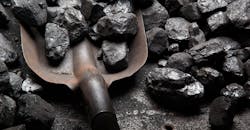I landed my first semi-steady job when I was about 12 or so. As soon as the weather turned cold, a giant truck would back into the lot of our local small town mini-mall every other Saturday loaded with one to three tons of fresh coal. It was my job to shovel that coal through a tiny window that led to the storage compartment feeding an (extremely) out-of-date furnace. The job could take me one hour to finish or it could take me 10; the pay was always the same: $15 per truckload.
The job taught me a lot of important lessons about work, some of which I learned quickly (i.e., lift with your legs!) while others took the first full winter to sink in (i.e., working fast vs. working well). These lessons have all served me well throughout my life, but there was one particular part of the job I wasn’t quite able to grapple with at the time: the fact that the job existed at all. It’s a point I still think about today.
The furnace heating the place was basically an old locomotive engine—it was this enormous, filthy, noisy, clanking mess of metal that consumed an entire garage-sized room. It was so big and so old that I expect the whole building was probably built around it.
The furnace was the perfect picture of inefficiency—it needed constant repair, its fuel costs were preposterous (even if my labor was cheap) and every vendor in the place complained about it all through the winter. The place even had to close entirely on especially cold days because the furnace couldn’t keep up. It was an absolute money pit—it hurt revenue, it hurt profits, it hurt opportunity (and it hurt my back).
But what was the solution? Updating the system would have probably required tearing out an entire wall and using a crane to extricate the old furnace, plus the cost of the replacement and all the accoutrements it would require. In total, that was likely just a fraction of the long-term costs of maintaining the old system, but it was clearly far more than the owner was willing (or able) to drop all at once.
So the old system remained, and so did my job. Everything just continued inefficiently, expensively into the future.
And now here we are in the future—on the precipice of a new decade and new era brimming with unbelievable new technologies that promise opportunities and capabilities we can hardly imagine today. From a pure greenfield perspective, the future seems overwhelmingly bright—but of course, it’s not all greenfield. Many of us, particularly in the manufacturing industry, remain stuck in that old coal furnace conundrum.
The world is changing, sure. There are cheaper, more efficient ways to do things, absolutely. And failure to change could mean failure of the business. We all know this; everyone knows this. But that doesn’t change the fact that current production processes and all the current capital equipment they require are still sitting out there, central to the business. In a sense, we all have these giant, broken furnaces in our basements around which the whole place was built.
From my perspective, it seems that the early part of the 2020s will be defined by our efforts to finally make these long-overdue updates. This year may have been the year of digital transformation, but I expect 2020 to be the year of true digital progress—as we begin tearing down these old walls and rebuilding our critical processes for a new age. For many of us, there’s little choice otherwise.
For me, I only need to head back to the coal furnace to see how the story will end.
My shoveling the job lasted about three winters before the furnace finally died. The owners, unprepared for such a predictable outcome, were left weighing the costs of emergency replacement against shuttering the business for good.
Whatever decision they made was missed by me, though—I was already too busy working a steadier, future-proof job at the local video rental place… but that's a whole different disruption story.
About the Author
Travis Hessman
Content Director
Travis Hessman is the editor-in-chief and senior content director for IndustryWeek and New Equipment Digest. He began his career as an intern at IndustryWeek in 2001 and later served as IW's technology and innovation editor. Today, he combines his experience as an educator, a writer, and a journalist to help address some of the most significant challenges in the manufacturing industry, with a particular focus on leadership, training, and the technologies of smart manufacturing.
